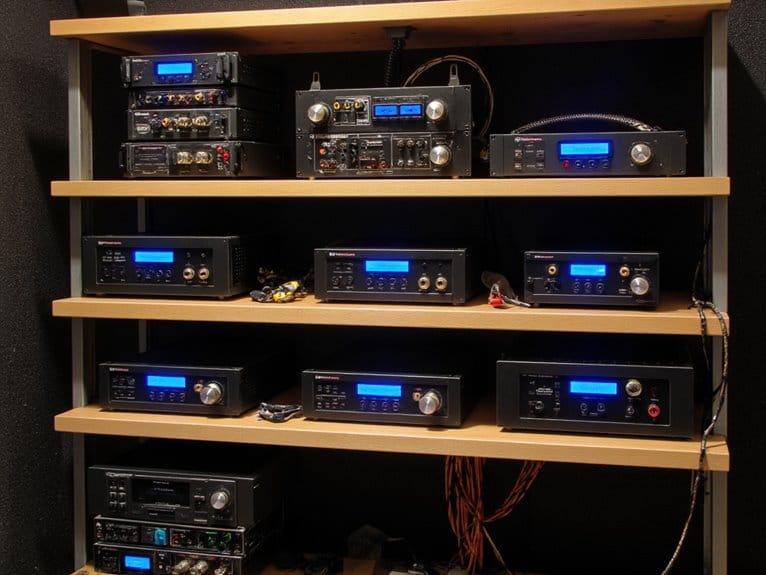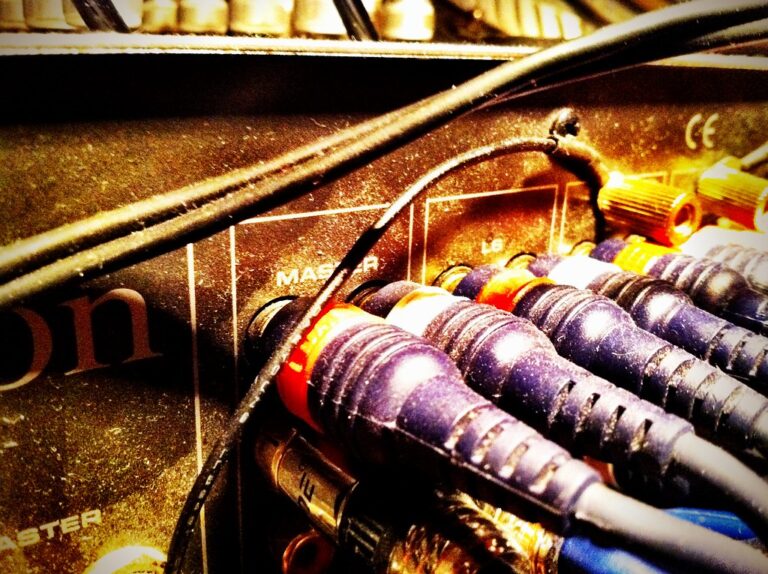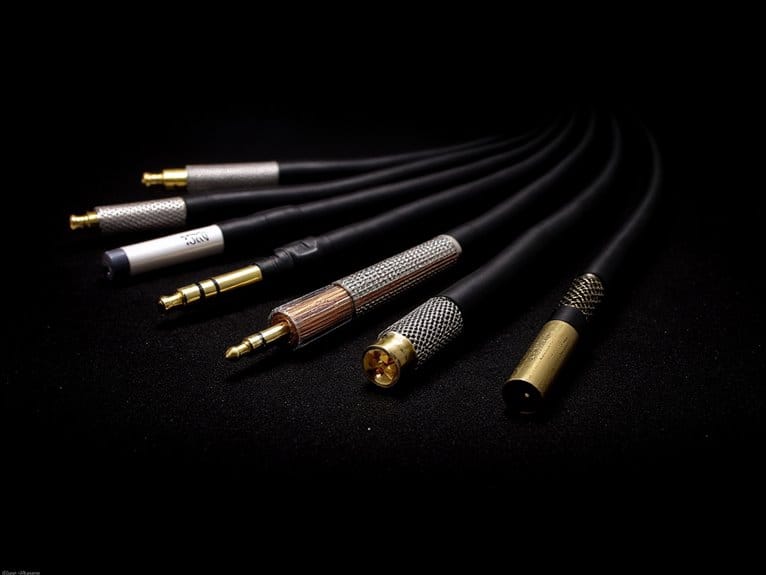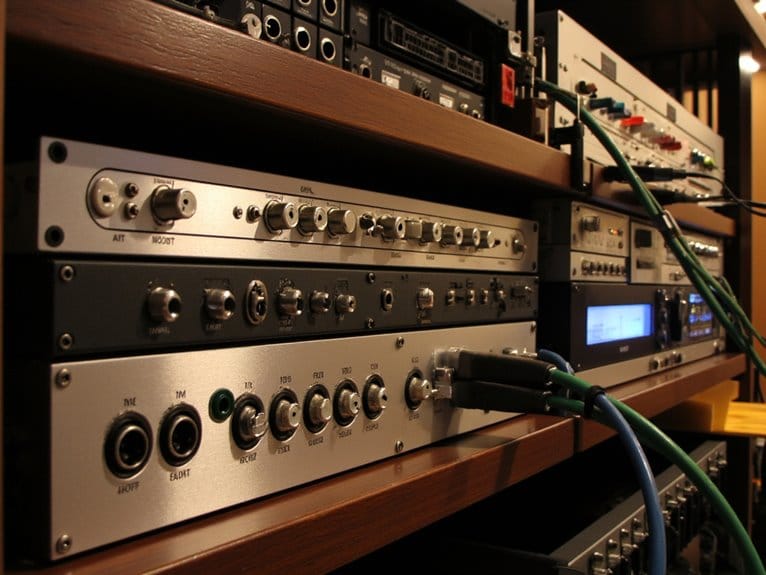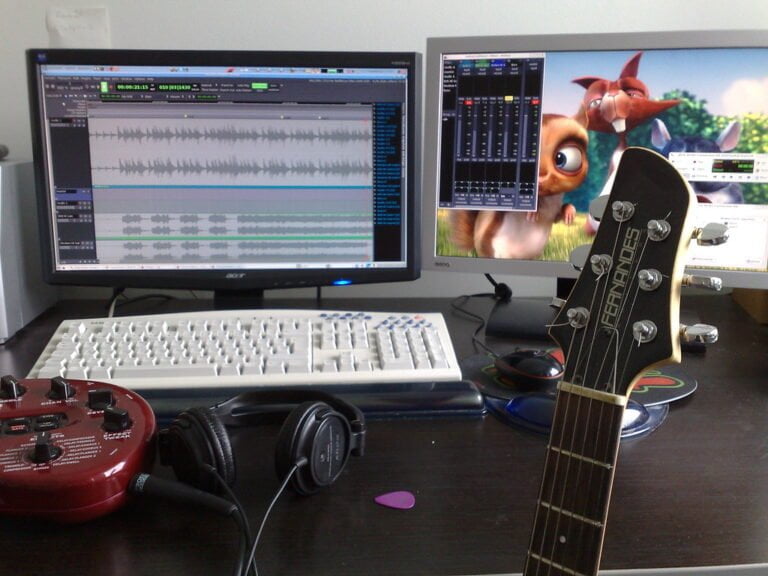Optimizing Signal Flow: Cable Management Tips
When it comes to optimizing signal flow, envision cables as the lifelines of your audiovisual setup, intricately weaving through your systems. The key to seamless operations lies in mastering cable management. From strategically routing cables to selecting the right lengths and types, each detail plays a crucial role in maintaining efficiency and quality. But what about the often-overlooked aspects that can make or break your setup? Let’s explore some lesser-known yet impactful cable management tips that could elevate your audiovisual experience to new heights.
We are supported by our audience. When you purchase through links on our site, we may earn an affiliate commission, at no extra cost for you. Learn more.
Cable Routing and Labeling
When planning cable routing and labeling for ideal organization, consider using color-coded identifiers to streamline troubleshooting processes. Labeling your cables with clear identifiers such as source, destination, and signal type not only aids in easy identification but also plays an important role in minimizing errors during maintenance or upgrades. By implementing a standardized color-coding system, you can quickly identify different types of cables, reducing the time needed to trace connections.
Efficient cable routing is essential to avoid interference, especially electromagnetic interference (EMI), which can lead to signal degradation. Plan cable routes away from power sources and other potential EMI emitters to maintain the best signal quality. By carefully organizing the layout of your cables, you can prevent signal distortions and maintain reliable data transmission.
Proper cable management involves securing cables in place to prevent tangling or accidental disconnections. Utilize cable ties or Velcro straps to bundle cables neatly and avoid clutter. This not only maintains a tidy workspace but also reduces the risk of signal interruptions due to loose connections. Remember, a well-organized and labeled cable system not only improves efficiency but also simplifies troubleshooting processes in the long run.
Cable Length and Type Selection
To optimize signal transmission and prevent interference, it is important to measure distances accurately when selecting cable lengths and types. The cable length plays a vital role in maintaining signal strength and quality. Using cables that are either too short or too long can lead to signal degradation. It is essential to choose cables that match the device requirements to prevent compatibility issues and guarantee seamless connectivity.
When it comes to cable type selection, one must consider the specific needs of the audio and video signals being transmitted. Different types of cables such as coaxial, HDMI, or optical cables offer varying levels of signal quality and bandwidth capacities. Selecting the appropriate cable type is key to achieving the desired signal fidelity.
Electromagnetic interference (EMI) is a common issue that can disrupt signal flow. To mitigate EMI, it is recommended to use high-quality cables with proper shielding. Shielded cables help prevent external electromagnetic fields from interfering with the transmitted signals, resulting in a cleaner and more stable signal transmission.
Cable Organization Tools
Cable clips and clamps serve as indispensable tools in securing cables effectively and preventing tangling. When organizing cables, it is important to utilize the appropriate tools for efficient management. Here are key cable organization tools that can greatly aid in maintaining a tidy and functional setup:
- Cable Clips: These small but mighty tools are perfect for fastening cables along walls, desks, or other surfaces, keeping them in place and minimizing the risk of tangling.
- Cable Trays: Ideal for larger cable collections, cable trays provide a structured storage solution where cables can be neatly arranged and easily accessed when needed.
- Cable Ties or Velcro: Cable ties and Velcro straps are excellent for bundling cables together, preventing them from becoming a jumbled mess. They offer a simple yet effective way to manage multiple cables simultaneously.
- Cable Management Boxes: These boxes are great for concealing excess cable lengths and power strips, helping to declutter the space and maintain a clean appearance.
Signal Flow Planning
Efficient signal flow planning is important for optimizing the routing of audio and video signals within a system. When planning signal flow, it is essential to take into account the sequence of devices and connections to make sure the transmission of signals is optimized. Mapping out the path of signals helps minimize interference and maintain signal quality throughout the system. Using signal flow diagrams or charts can aid in visualizing the routing of audiovisual signals, making it easier to identify potential bottlenecks or areas for improvement.
To achieve efficient cable management best practices, arranging equipment in a logical order is necessary. This logical arrangement helps streamline the signal flow process, reducing the risk of tangled or crossed cables that could disrupt the signal transmission. By organizing the equipment in a systematic manner, it becomes easier to troubleshoot and make adjustments when necessary.
Regular Maintenance and Cable Testing
Ensuring regular maintenance and thorough cable testing is essential for preserving the integrity and reliability of audiovisual systems. Regular maintenance involves cleaning cables and connectors using appropriate solutions to prevent signal degradation and interference. Labeling cables is critical for easy identification during maintenance checks. Investing in cable testers can help detect faults and guarantee a reliable signal flow. Here are key steps for effective maintenance and testing:
- Cleaning Cables and Connectors: Regularly clean cables and connectors to maintain peak performance and prevent signal issues.
- Labeling Cables: Properly label cables using a label maker for easy identification during maintenance, troubleshooting, or reconfiguration.
- Using Cable Testers: Invest in cable testers to detect faults, verify connectivity, and ensure the integrity of the audiovisual system.
- Implementing Cable Raceways: Utilize cable raceways to organize and protect cables, reducing the risk of damage and making future maintenance easier.


